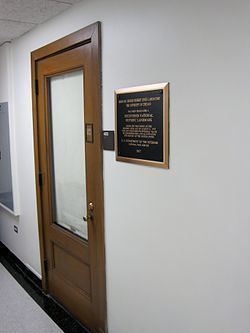Location Chicago, Illinois NRHP Reference # 67000005 Added to NRHP 28 May 1967 | Built 1942 Opened 1942 | |
 | ||
Similar Lorado Taft Midway Studios, Kenwood Astrophysical Observatory, Henry Crown Fieldhouse, Hutchinson Commons, Bartlett Gymnasium | ||
The George Herbert Jones Laboratory, at 5747 S. Ellis Avenue, Chicago, Illinois, is a facility building of the University of Chicago. Room 405 of the building was named a National Historic Landmark in May 1967.
The Jones Laboratory was built in 1928-1929 as facility and instructional space for the university's staff of research chemists and graduate students in chemistry.
As part of the U.S. War Department's Manhattan Project, University of Chicago chemists began to study the newly manufactured radioactive element, plutonium. Room 405 was the site where, for the first time, a trace quantity of this new element was isolated and measured on September 10, 1942. This procedure enabled chemists to determine the new element's atomic weight.
Physicist Glenn Seaborg said of this event: "These memorable days will go down in scientific history to mark the first sight of a synthetic element, and the first isolation of a weighable amount of an artificially produced isotope of any element."
The U.S. Department of Energy remediated Jones Laboratory in the 1980s by studying and removing almost all of the building's World War II-era radioactive waste. The remediation took place in 1982, 1983, and 1987.
Although room 405 looks nothing like the original condition, the lobby of the laboratory maintains a collection of the specialized equipment used to perform the measurements.
